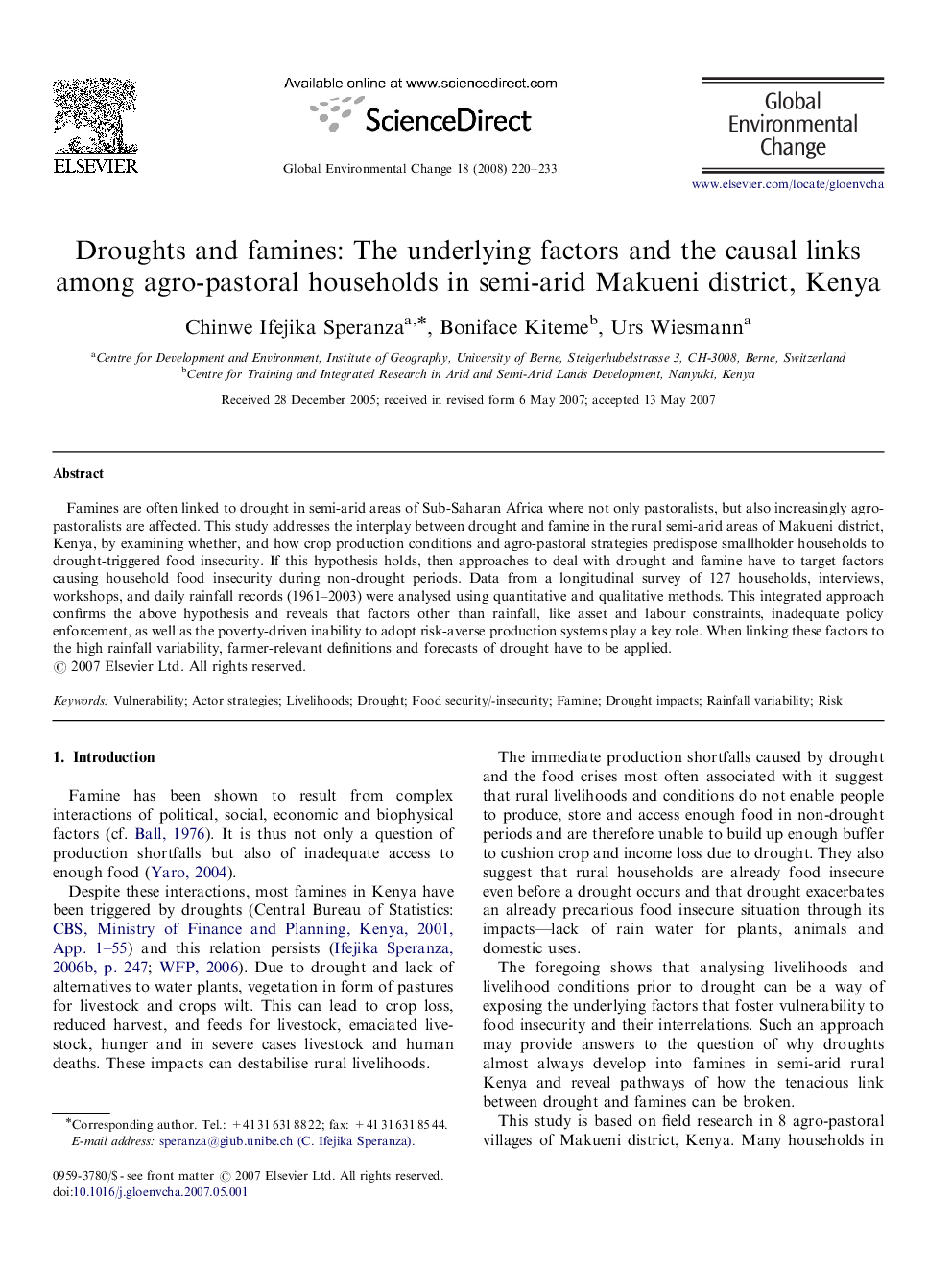| Article ID | Journal | Published Year | Pages | File Type |
|---|---|---|---|---|
| 1055087 | Global Environmental Change | 2008 | 14 Pages |
Famines are often linked to drought in semi-arid areas of Sub-Saharan Africa where not only pastoralists, but also increasingly agro-pastoralists are affected. This study addresses the interplay between drought and famine in the rural semi-arid areas of Makueni district, Kenya, by examining whether, and how crop production conditions and agro-pastoral strategies predispose smallholder households to drought-triggered food insecurity. If this hypothesis holds, then approaches to deal with drought and famine have to target factors causing household food insecurity during non-drought periods. Data from a longitudinal survey of 127 households, interviews, workshops, and daily rainfall records (1961–2003) were analysed using quantitative and qualitative methods. This integrated approach confirms the above hypothesis and reveals that factors other than rainfall, like asset and labour constraints, inadequate policy enforcement, as well as the poverty-driven inability to adopt risk-averse production systems play a key role. When linking these factors to the high rainfall variability, farmer-relevant definitions and forecasts of drought have to be applied.
